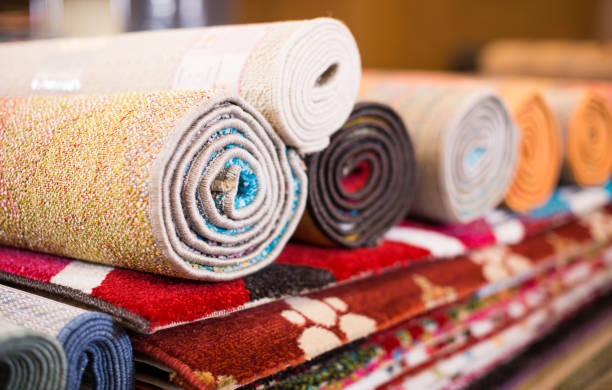Carpets can elevate the look and comfort of any home, but they require proper care to last. Whether you have a plush bedroom carpet or durable office flooring, maintaining them effectively will save you money in the long run. In this guide, we’ll explore expert strategies for extending the lifespan of carpets, keeping them fresh, and protecting your investment.
Regular Vacuuming
Frequent vacuuming is the foundation of carpet maintenance. Dirt, dust, and debris settle deep into the fibers, causing them to break down over time. Aim to vacuum at least once a week in low-traffic areas and more frequently in busy spaces.
-
TipUse the right vacuum settings based on your carpet type. High-pile carpets require a higher setting, while low-pile carpets benefit from strong suction.
-
BenefitRegular vacuuming preserves the carpet’s appearance and helps improve indoor air quality by reducing allergens trapped in the fibers.
Use Mats and Runners in High-Traffic Areas
Place mats and runners in entryways, hallways, and other high-traffic areas to minimize wear. These rugs absorb foot traffic, protecting the carpet underneath from dirt and excessive wear.
-
Use Carpet ProtectorsPlace plastic mats or furniture pads under dining chairs and heavy furniture to prevent indentations and tears in your carpet.
Prompt Stain Removal
Quick action on spills is essential to prevent stains. Immediately blot the spill with a clean cloth to absorb as much liquid as possible.
-
TipAvoid rubbing the spill, as it can push the liquid deeper into the fibers, making it harder to clean.
-
For Persistent StainsConsider using a professional carpet cleaner for tougher stains like wine, coffee, or ink.
Schedule Professional Deep Cleaning Every 12-18 Months
Vacuuming removes surface dirt, but deep cleaning is necessary to remove dirt embedded deep within the fibers. Schedule a professional deep cleaning every 12-18 months to refresh your carpets and maintain their longevity.
-
Steam Cleaning vs. Dry CleaningSteam cleaning (hot water extraction) offers a thorough clean, while dry cleaning provides faster drying times but may not be as deep.
Rearrange Furniture Regularly
Heavy furniture can cause indentations and uneven wear on carpets. Rearranging your furniture every few months helps distribute weight and traffic evenly across the carpet.
-
TipUse furniture pads under heavy items to minimize pressure on the carpet fibers and prevent dents.
Use Door Mats to Reduce Dirt Indoors
Placing door mats at all entrances can significantly reduce the amount of dirt and debris tracked onto your carpet. This helps keep the fibers clean and prevents premature wear.
-
TipHave both exterior and interior mats for extra protection
-
Bonus TipImplement a no-shoes policy indoors to further reduce the dirt entering your home.
Choose Durable Carpet Materials
The longevity of your carpet depends significantly on the materials you choose. Different fibers have varying levels of durability, stain resistance, and maintenance requirements:
-
NylonHighly durable and resistant to wear, making it ideal for high-traffic areas.
-
PolyesterSoft and stain-resistant but less durable under heavy use.
-
WoolLuxurious and long-lasting but requires more care to maintain.
Apply Stain-Resistant Treatments
Stain-resistant treatments like Scotchgard provide an extra layer of protection, helping to repel spills and make cleanups easier.
-
TipAsk your carpet cleaning professional to apply protectants after deep cleaning to maximize the longevity of your carpets.
Trim Loose Fibers and Snags
Loose fibers or snags can appear over time, especially in high-traffic areas. Promptly trimming snags with sharp scissors prevents them from unraveling and causing further damage.
-
TipNever pull on loose threads, as this can cause more significant damage to the carpet fibers.
Control Humidity to Prevent Mold and Mildew
High humidity levels can cause your carpet to trap moisture, leading to mold and mildew growth. Maintain indoor humidity levels between 30% and 50% to protect your carpet from moisture damage.
-
TipConsider using a dehumidifier in damp areas, such as basements, to keep your carpets dry.
Regular Carpet Inspections
Conduct regular inspections of your carpset, especially in high-traffic areas, to catch signs of wear, fading, or damage early. Early detection allows you to address small issues before they escalate into costly repairs or replacements.
-
TipAddress minor tears or fading before they worsen, saving you the cost of replacing entire sections of carpet.
Professional Carpet Stretching for Wrinkles and Ripples
Over time, carpets may develop wrinkles or ripples, especially if they weren’t installed properly. Professional stretching pulls the carpet taut, eliminating uneven surfaces and preventing further wear.
-
TipRegularly inspect for any loose or wrinkled areas and have them stretched to avoid potential tripping hazards.
Invest in High-Quality Carpet Padding
The padding under your carpet acts as a cushion, absorbing the impact of foot traffic and prolonging the life of your carpet. High-quality carpet pads provide better insulation and protect your carpet from premature wear.
-
TipIn high-traffic areas, consider using thicker padding for enhanced durability and comfort.
Minimize Sun Exposure to Prevent Fading
Carpet color can fade over time due to prolonged exposure to direct sunlight. Use curtains, blinds, or UV-protective window films to reduce sunlight exposure and preserve your carpet’s color.
-
TipRotate rugs or rearrange furniture periodically to ensure even fading across the entire carpet.
Monitor Pet Behavior to Prevent Damage
Pets can cause damage to carpets by scratching, chewing, or having accidents. Keep pet nails trimmed to prevent snags, and clean up any pet-related messes immediately using enzymatic cleaners to remove stains and odors effectively.
-
TipPlace pet-friendly mats in areas where pets spend the most time to further protect your carpet.
Conclusion: Prioritize Regular Maintenance for Long-Lasting Carpets
Extending the lifespan of your carpets boils down to consistent maintenance and proactive care. Whether through frequent vacuuming, treating spills promptly, or using mats and runners in high-traffic areas, these small efforts can make a big difference.
By selecting durable carpet materials, regularly rearranging furniture, and keeping your carpet clean and protected, you can ensure that your carpets remain in excellent condition for years to come, saving you money and keeping your home looking its best.




